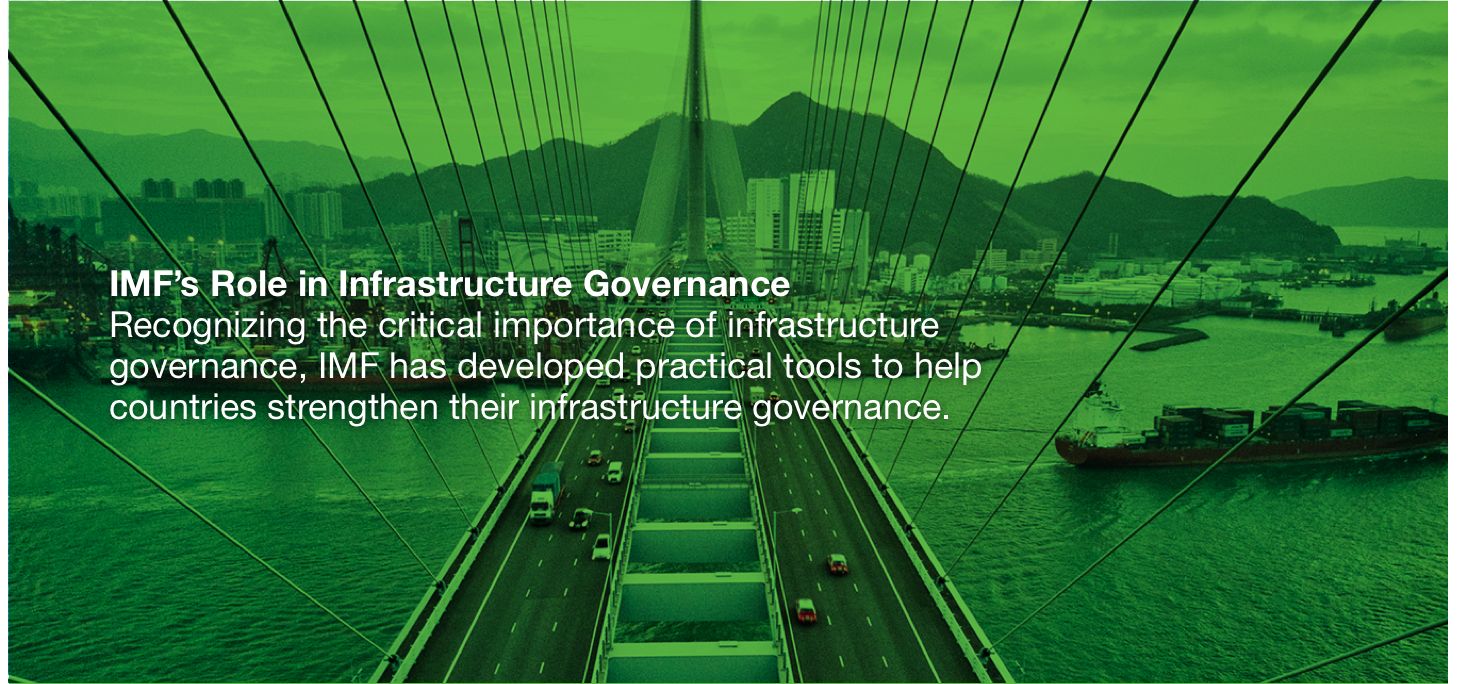IMPORTANCE OF INFRASTRUCTURE GOVERNANCE
Quality infrastructure investment is essential for sustainable and equitable economic growth. Yet, creating quality infrastructure has often been challenging. IMF analysis suggests that, on average, over one-third of the resources spent on public investment are lost due to inefficiencies in its public investment management processes, with substantial scope for improving public investment efficiency across income groups.

The benefits of additional investment depend crucially on the strength of infrastructure governance—i.e. public-sector institutions in planning, allocating, and implementing public investment in infrastructure. Strong infrastructure governance helps improve efficiency of public investment, thereby supporting economic growth and fiscal sustainability. IMF analysis shows that strong infrastructure governance can help countries close more than half of their efficiency losses.
 |
PUBLIC INVESTMENT MANAGEMENT ASSESSMENT
Public Investment Management Assessment (PIMA), developed by the IMF in 2015, is a comprehensive framework to assess infrastructure governance for countries at all levels of economic development. The PIMA evaluates strengths and weaknesses of a country’s infrastructure governance at each stage of public investment cycle—the planning, allocation and implementation; helps identify reform priorities; and devises practical action plans for reform implementation.
Note: Country borders or names do not necessarily reflect the IMF’s official position.
⚠ Some users may experience reduced functionality using Internet Explorer. For the optimal experience, use Chrome or another alternative browser.
PUBLIC–PRIVATE PARTNERSHIP FISCAL RISK ASSESSMENT MODEL
Facing massive infrastructure needs, countries are developing strategies for how to mobilize private sector financing. Public Private Partnerships (PPPs) can harness private-sector innovation and efficiency to improve infrastructure service provision. Yet, they pose various fiscal challenges including long-term fiscal commitment and fiscal risks, which need to be carefully managed. The IMF and the World Bank have developed an analytical tool called the PPP Fiscal Risk Assessment Model (PFRAM) to help countries assess the potential fiscal costs and risks arising from PPPs.

